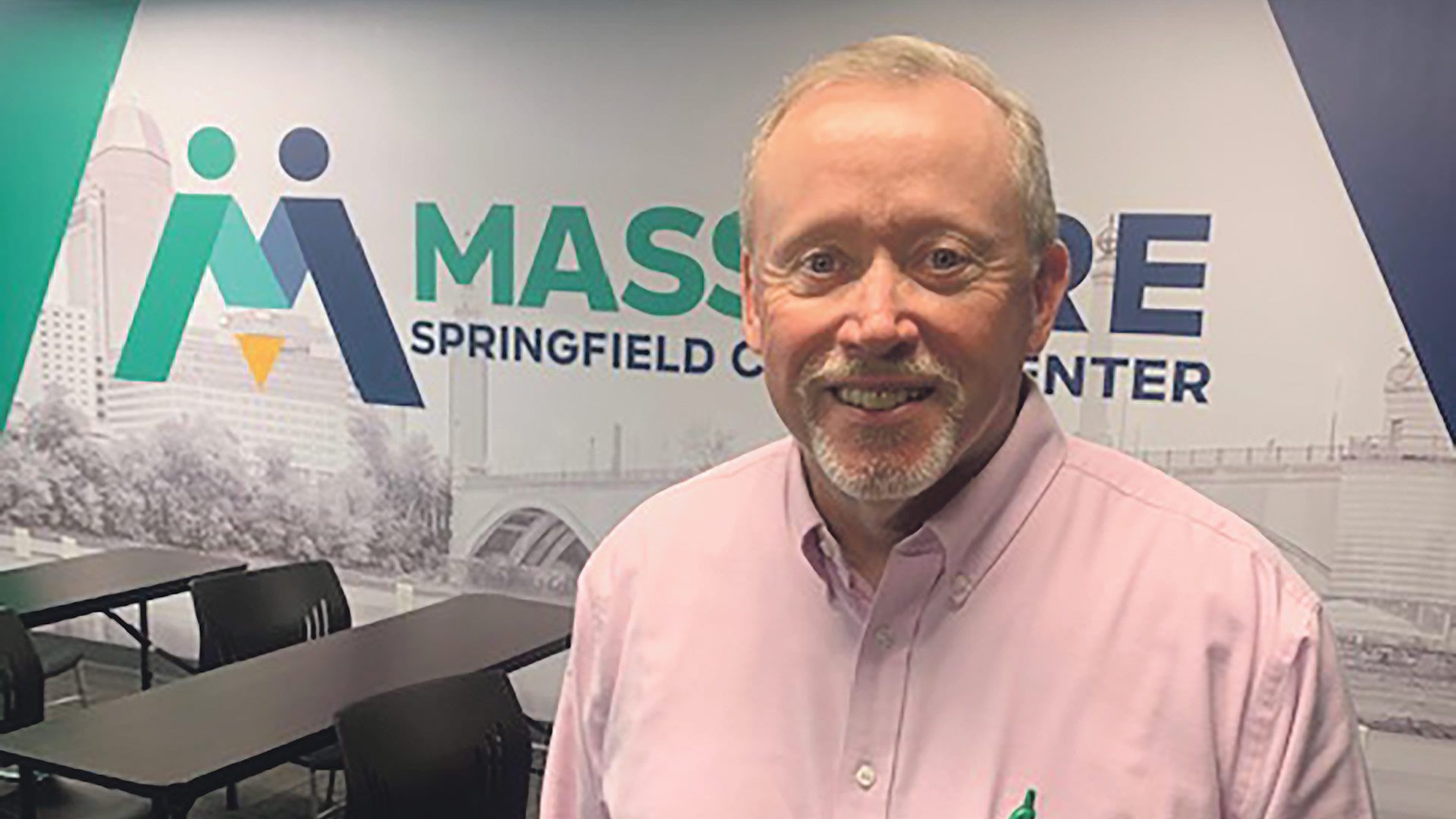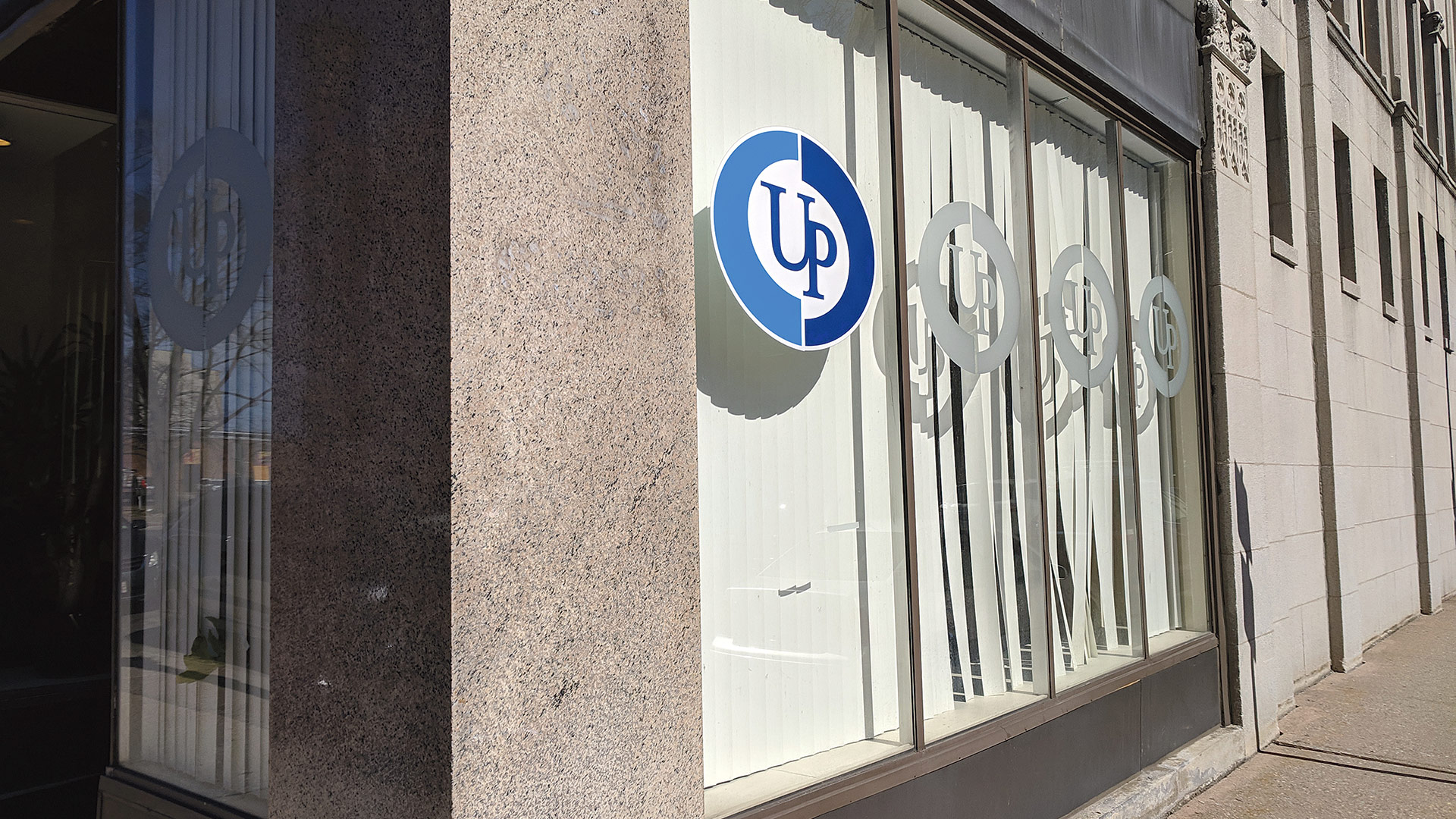Hire Expectations

Kevin Lynn, executive director of the MassHire Springfield Career Center.
It was the spring of 2022, and Kevin Lynn was starting to think the job fairs conducted three times a year at the Basketball Hall of Fame by MassHire Springfield Career Center — which he serves as executive director — had run their course.
Attendance among job seekers, which had been running at roughly 300 pre-pandemic, had dropped to maybe 100, even though employers across the region and in virtually all sectors of the economy were seeking help — many of them desperately.
As for the job seekers themselves … the very generous unemployment benefits awarded at the height of the pandemic, when millions of jobs disappeared almost overnight, were all but gone. Yet, many people were still sitting on the sidelines, not at all anxious to enter the workforce.
“I didn’t know what was going on — nothing made any sense, really,” said Lynn, who has spent more than 20 years with the entity now known as MassHire Springfield Career Center, 10 as its director. People were still hunkered down, and people like me were asking, ‘how can these individuals not afford to work?’”
While waiting for an answer to that question — one that never really came — two things happened. The first is that the picture started righting itself with regard to people getting back to work. The second is that MassHire Springfield, in Lynn’s words, “started acting more like a business.”
By that, he meant the agency started to more aggressively market itself and its services, especially through digital platforms.
“We had to get our name in front of people and remind them of exactly what we do and how we do it,” he recalled. “Also, we had to pull in what I’ll call a new generation because we’d been on pause for the better part of four years. That natural flow that we had established since 1997 had been disrupted, so we needed to prime that pump again with our core constituency.”
Those efforts have succeeded in bringing the customer base back to pre-pandemic levels, as we’ll see. And roughly two years after he was thinking about retiring the job fairs, attendance is pretty much back to where it was pre-pandemic, said Lynn, adding that the program will actually be expanded this year from three fairs to four, with the fourth likely to take place at the agency’s facility on Liberty Street in Springfield.
“We had to pull in what I’ll call a new generation because we’d been on pause for the better part of four years. That natural flow that we had established since 1997 had been disrupted, so we needed to prime that pump again with our core constituency.”
“We think we need a fourth because of the demand,” he said. “We’ll see how it goes.”
As for the job market itself … Lynn said things have not exactly returned to normal — whatever that is — although he is seeing an overall softening of the job market, with many challenges remaining for those needing skills, older workers (over age 55), and other constituencies.
Most employers are still struggling to find good help, he said, adding quickly that, while some are willing to train and shape candidates who may not have the full package, others are holding out for the “fully formed” applicant, and sometimes losing out in the process.
Meanwhile, on the wage front, many employers are still not fully embracing the need to move the needle higher. Instead, they’re focusing on what they think they can afford, and not the proverbial big picture — meaning what they spend to hire, and then to hire again when someone brought in at a comparatively lower wage leaves after a few months, or a few weeks, because he or she can secure a dollar or two more an hour elsewhere (more on this later).
These are just some of the observations made by Lynn as he talked about his agency, the job market, and what could, and likely will, come next.
The Job at Hand
“Blocking and tackling.”
That’s what Lynn said MassHire Springfield is back to focusing on these days after what can only be called a turbulent period that includes the pandemic and its aftermath.
By blocking and tackling, he means work with both employers and job seekers to put people in jobs. Such work with job seekers includes training available through the agency’s upskilling program, workshops on everything from handling tough interview questions to helping mature workers prepare for today’s job-search process, job fairs, connecting individuals with resources, and much more.

Kevin Lynn says the job fairs conducted in partnership with Audacy Springfield and the Basketball Hall of Fame are back to pre-pandemic numbers.
As for the pandemic and its aftermath, this was a difficult, stressful time, when the agency’s mission — connecting job seekers with employers and helping those job seekers garner the skills needed to not only land jobs, but secure careers — didn’t really change. But the overall need for it did — sort of.
“COVID killed our customer base,” he said matter-of-factly. “Customers weren’t coming in, and they weren’t even using us virtually.”
Quantifying the matter, he noted that, in fiscal 2019, prior to COVID, the agency served roughly 11,500 people over the course of the year. For fiscal 2020, which included the first several months of the pandemic, the number fell to 8,500. And for fiscal 2021, a full and very traumatic year of COVID, the number of customers tumbled to 4,300, roughly a third of the pre-pandemic total.
Why? There were several reasons, Lynn recalled. First, many were content to collect those generous unemployment benefits and not enter, or re-enter, the workforce, he said, adding that, during those times, people not actively seeking employment could receive unemployment benefits, something that wouldn’t happen in more ‘normal’ times. Meanwhile, many of those who had jobs were content to stay put given the large amounts of uncertainty that accompanied that environment — and a desire to work remotely.
“It was the devil you knew versus the one that you didn’t know,” he recalled. “Also, people were desperate to get working-at-home arrangements set up; everyone wanted to be remote. And if you were in a remote situation, and it was solid, you weren’t going to risk that by going to a new employer.”
Meanwhile, with the pandemic came the loss of day-care services for many, he went on, adding that some people had no choice but to quit their jobs — or not seek a job or a better job — so they could be home with their children. It was the same for many of those caring for elderly parents.
“A large section of the labor market just literally pulled back and chose not to work,” he said. “And that impacted us greatly.”
Indeed, the phone started ringing at a much slower pace, and there was a considerably quieter atmosphere at the career center, Lynn recalled, adding that, by the end of 2022, as the number of customers served rose slightly to more than 5,000 (still less than half the pre-pandemic totals), the agency responded by being proactive.
It launched a six-month advertising campaign, much of it digitally with Audacy Springfield (the agency’s partner on the job fairs), designed to raise awareness of the agency, its services, and those fairs.
“A large section of the labor market just literally pulled back and chose not to work. And that impacted us greatly.”
And for fiscal year 2023, the customer base jumped to more than 9,300, a 56% increase, he went on, adding that this was a byproduct of both those aggressive efforts to prime the pump and what he considers a softening of what had been a very attractive market for job seekers, with employers struggling to replace retiring Baby Boomers and simply handle the turnover that was impacting almost every sector.
Searching … for Answers
As Lynn explained, “if you have skills, you’re in a good spot in terms of being able to find job opportunities and get offers. But the job market has softened over the past few months; it’s not as strong as it was prior to this.”
Elaborating, he said the market remains challenging for many subgroups within the workforce and those looking to join it, including older workers, many of whom have skills but struggle to find employers willing to recognize and pay for them.
“They continue to have problems breaking through and getting jobs simply because of their age,” he told BusinessWest. “We see it all the time; you look at people, and they have a solid résumé, and you think, ‘this person is at least worth a conversation.’”
But often, they aren’t part of the conversation.
“Maybe the person isn’t right for the organization; I get all that,” Lynn went on. “But when you have people who have come to us, and they’re working very diligently and a lot of times working with our job developers even, and they’re trying to find work … it can be a tremendous struggle to come out on the other end.”
For those older workers who do come out on the other end with a job, their search will have been much longer than for those who are younger, as many employers are hesitant to look past someone’s date of birth and instead focus on what they might be able to bring to an organization.
Overall, and as noted earlier, Lynn said many employers are still looking for the full package, the “fully formed” applicant, as he called it, when hiring.
“They’ll vocalize that they’re not,” he said, noting that many will say or hint that they are willing to train. “But that’s not the case. They’re holding out for the fully formed applicant, and that’s a problem for the job seekers.”
Another problem is what he referred to as “ghost postings,” which are, well … what that phrase indicates they are: postings that aren’t exactly real.
“They may not have the opening, but they’re posting the job on the anticipation that they may have an opening,” he explained, adding that such phantom postings are prompting him to question the actual level of demand in certain fields and for certain jobs. Meanwhile, they are bringing new forms of stress to job seekers, who are investing time, energy, and emotion in pursuit of a job that may or may not exist.
Meanwhile, for those pursuing work, or a better job, the bigger challenge may not be finding a job, but finding one they can live on.
“It takes more diligence to find the right job,” he said. “Anyone can find a job; the issue is finding a job with a living wage — pay and benefits that you can live on. We see companies that post jobs that do not pay a living wage.
“My staff has conversations with employers on this topic; they’ll say, ‘we can post this job for you, but at the wage you are offering, you are not going to get any applicants,’” he noted. “If you’re at $17 or below, you’re going to have a tough time — a very tough time.”
He said most employers fully understand that a lower wage number shrinks the applicant pool. What they may not fully appreciate is that, even if they do hire someone, that lower wage serves to further increase turnover, bringing costs that will likely exceed a higher wage.
As for those job fairs, they certainly provide a window into what’s happening with the job market, he said, noting that the one in May drew more than 300 job seekers and 54 companies, a growing number of which were represented not by recruiters, but by decision makers — even the CEO.
Such was the case with Conval Inc., a Connecticut-based valve manufacturer. The president of the company was behind the table at the job fair and managed to not only talk with an applicant for a machinist’s position, but hire him on the spot.
“That made his night because he can’t find machinists anywhere,” said Lynn, adding that, while such on-the-spot hirings are quite rare, the goal of these fairs is for employers and job seekers alike to make connections, and these are, indeed, happening.
In short, the clock hasn’t been turned all the way back to 2019, but it’s looking and feeling more like those times.






 “Employees are demanding more from their current and potential employers. Companies should be very careful to pay attention to the change in dynamics if they want to retain or attract new talent to their workforces.”
“Employees are demanding more from their current and potential employers. Companies should be very careful to pay attention to the change in dynamics if they want to retain or attract new talent to their workforces.”



